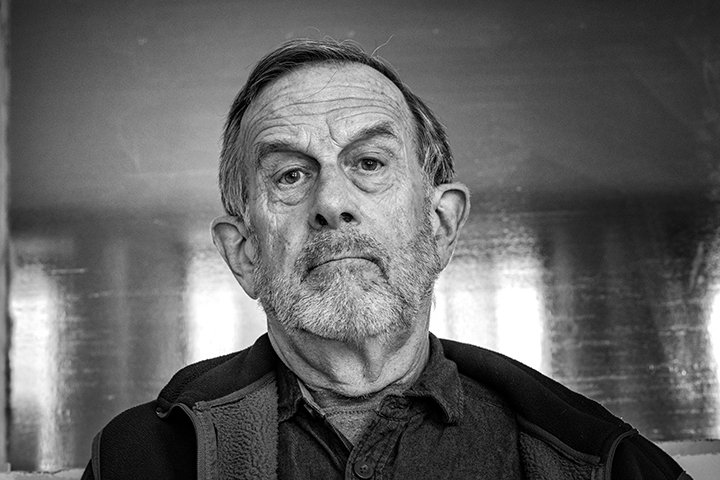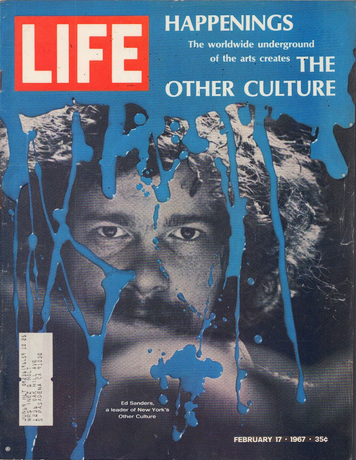COSMOS Book Review
Mooney’s Manifesto
© Bing McGilvray
May 17, 2023
Mooney’s Manifesto
Published by Spuyten Duyvil, New York, 2023
Mooney’s Manifesto is Greg Gibson’s new book, a roman à clef, fictionalized version of Greg’s haunting life experiences. And yes, the best damned novel I’ve read in a long time. Like few characters of fiction ever could, Mooney got to me. Now I cannot get him out of my head.
Greg Gibson’s earlier book, Gone Boy: A Walkabout [A Father’s Search for the Truth in His Son’s Murder] is dedicated to:
GALEN CROTTY GIBSON
(1974-1992)
Everything I do now
I do for you, too.
Painful to read, Gone Boy is a powerful memoir of an incomprehensible personal nightmare, a true “American Horror Story,” masterfully written. Also, proof that Gregory Gibson is a first-person journalist of the highest order.
Mooney’s Manifesto is Greg’s attempt to exorcise his demons. He seems to be channeling and challenging his own consciousness and writing at the height of his powers. Gone Boy (1999) and Mooney’s Manifesto (2023) seem like opposites. Each stands on its own. They are also one book, or bookends, of a long saga of despair. The before and after, then and now. Yin and Yang.
Galen Gibson, age 18, was murdered in December 1992, while walking out of the library of Simon’s Rock College, a peaceful campus nestled in a picturesque corner of Western Massachusetts. Galen Gibson, gone, in an instant. A psychopathic killer, a fellow student, shot him dead. Also randomly executed was professor Ñacuñán Sáez, 37. Four others were wounded; security guard Theresa Beavers, 42, and students Thomas McElderry, 19, Joshua A. Faber, 17, and Matthew Lee David, 18.
Gregory Gibson. ©2023 Paul Cary Goldberg.
This shocking event occurred over 30 years ago, back when shootings were not an everyday obscenity. Today, little shock value remains. Now we are programmed to accept homegrown genocide as just part of the numbing, non-stop, news feed. There is the customary moment of dismay. “Oh no, not again.” Then we know just what to do—look away and get on with our day. We are trained that way. Greg does not have this option. So, he writes.
Mooney’s Manifesto graphically lays out what’s transpired in the years since the publication of Gone Boy, except Gregory Gibson has been changed into his dark avatar, Joe Mooney.
Greg wrote Gone Boy because he thought he could make a difference. In 1999, the year it was published, the Columbine High School massacre occurred. Outraged, Greg became a tireless voice for other “survivors,” the families, the friends, the communities, who he met while crossing the country, appearing at rallies. Soon, he became a media talking head. He often shored himself with alcohol while maintaining a delicate balance with his wife, his two younger children, his activism, his writing, and his business. It was not easy. Then, the body count began to grow. Greg’s media appearances became more frequent, his cause more desperate. The gun madness was escalating, rapidly, relentlessly. Eventually, he realized he was making no difference at all. Everything went downhill from there. Disillusioned, defeated, he soldiered on. Greg got PTSD but he has survived. Mooney’s Manifesto is the story of his avatar Joe.
Greg calls Mooney’s Manifesto his “calm, demented book.” Yeah. So real it’s surreal. A gripping psychological thriller—a fast-moving page-turner—a raw, wrenching, riveting ride to the edge of oblivion. The Heart of Darkness.
Soon, we are inside the mind of Joe Mooney, the fictional author of Goodbye, My Son. One day, out of nowhere, a lunatic with an assault weapon assassinated Ryan Mooney, a student at a small New England college. Joe, still in shock, writes a memoir about his beloved son Ryan and the devastating effect on the survivors of this unthinkable yet preventable tragedy. Essentially Gregory is writing about himself but in the alternative universe of Joe Mooney. This is a high stakes, heart wrenching, high wire act, performed brilliantly.
Joe Mooney is the guy Gregory might be if his psyche slipped irreversibly to the Dark Side. Joe is a classic anti-hero on a mythic quest. Mooney’s story is an ancient cautionary tale, perhaps too late for our times, informing the reader that there are many Mooneys walking among Us, his neighbors, colleagues, and fellow Americans. Joe’s tormented journey hellishly descends through gradual transformations. As he develops his manifesto, the tension expands, quietly. Joe’s logic is as terrifying as it is rational. He means to wreak havoc and has the simple means to do it, buy guns. So easy. Joe is sick, his thinking is shattered, yet his ideation makes perfect sense. He is courting madness in a search for some sanity. He is coming apart at the seams, it seems. Miraculously, Gregory is still holding his own, because of his fierce intelligence, extraordinary discipline, self-will, and the unconditional love and support surrounding him.
©2023 Bing McGilvray.
Reading this book is like hearing a silent guttural scream building up slowly, decibel by decibel, to the moment of release—in an excruciating blast! The effect is like a gut punch to the soul. Who are We? How could such an advanced society be so intent on its own extinction? What species offers its young so freely on the altar of weapons? What have we become? Chaos reigns and hate wins? Is this the fate of the human race? No winner! How will it end? Joe Mooney lives in two civil war zones, one in his mind, the other in the USA. He embodies the truth we refuse to acknowledge. Joe Mooney is Us. In the end, it is Us he has in his telescopic sight, finger on the trigger.
Greg uses a cinematic structure to lay out Mooney’s tale in brief, individual scenes, like a script. Chronologically, we follow Joe, day by day. The sense of inescapable dread keeps building and building. Unbearable at times. Then, exploding like bloody spring flowers. Then, suddenly the story folds back in on itself. Then, it builds again. Joe is on a mission he doesn’t completely understand. The plot twists and turns continually, in surprising, unexpected ways. Then, the edge-of-your-seat climax. The End shook me to my bones. I was blown away, which I think was exactly the author’s intention.
Ironically, no violence takes place in the core of the story. It occurs “off camera” and is only mentioned in relation to violence that has already taken place or is about to happen again. We, mass media consumers, never see actual violence, only the aftermath, from a safe distance. The horror, the real horror, is too disturbing to look at. Hideous, abhorrent images have not been turned into a saleable commodity, yet. Who can bear to see children with their heads blown off? Every damned day! Michael Moore reported this morning, “there have been 200 mass shooting in 128 days”. We never see the real violence in vivid, extreme close-up. The breaking news, live from the scene, is only a sanitized report. Then the talking heads, canceling each other out, followed by the latest on Taylor Swift’s love life, corrupt politicians, frivolous trivia, layoffs and strikes, conflicting phobias, unending warfare, luxury homes and the homeless crisis, spooky science and scary tech, sports and weather, recipes, gossip, movies, more celebrities … blending into an non-stop, inescapable cacophony orchestrated from PR think tanks. Endless insanity. The marketing of madness. Guns, guns, guns. Greg drives this point home, viscerally. It is chilling to read.
Unlike Joe and Bethany Mooney, Greg Gibson and Anne Marie Crotty remain married to this day, united in a love partnership of 50+ years. The Crotty-Gibson family are embedded deep in the fabric of the Cape Ann cultural community. Greg is Gloucester’s finest living writer. He has authored 3 other unique, excellent books: The Old Turk’s Load, a crime noir set in the ’60s, Demon of the Waters, a true 19th century tale of Mutiny on the High Seas, and my favorite, Hubert’s Freaks, a rollicking romp involving a stash of unseen Diane Arbus photos, discovered in a long ago New York City, when Times Square was really seedy, and the art world got very greedy.
For 10 years, 2008-2018, Anne Marie operated the Flatrocks Gallery in Lanesville, showcasing a wide variety of artists, ranging from Willie Alexander to the Manship family. In 1976, Greg founded Ten Pound Island Books, which has morphed into his successful antiquarian book company. They live to continue their mission, their dedication to Galen. Their resilience is inspiring. They are remarkable people. We are fortunate to have them as neighbors.
At a little more than 250 pages, Mooney’s Manifesto flashes by quickly, propelled by an accelerating momentum that gets you in its grip and does not let go. This is a book I will never forget even though I might wish I could.
Mooney’s Manifesto is available locally at Dogtown Books, The Bookstore of Gloucester, and online in all the usual places.
Since its establishment in 1998 the Galen Gibson Fund has contributed to local educational initiatives, to community and faith-based groups that work with victims of gun violence, to organizations that promote commonsense gun laws, and to individual survivors of gun violence in financial need.
Donations in any amount are welcome and are tax-deductible.
The Galen Gibson Fund is a state and federally registered 501(c)(3) non-profit organization. It is privately endowed and continues to be supported by private and public donations.













